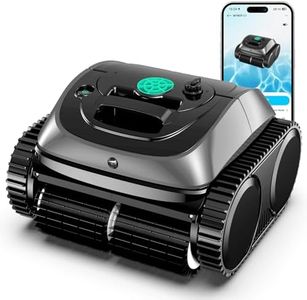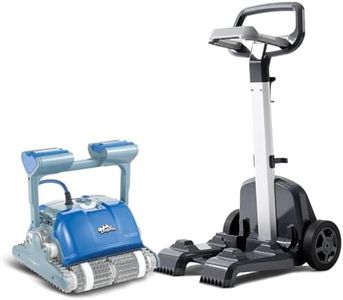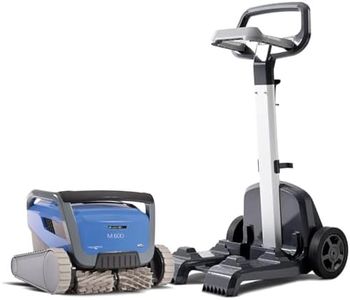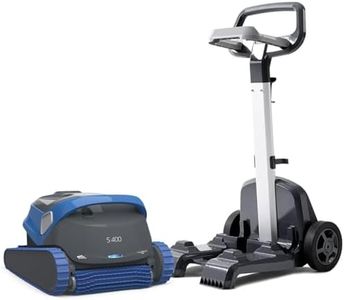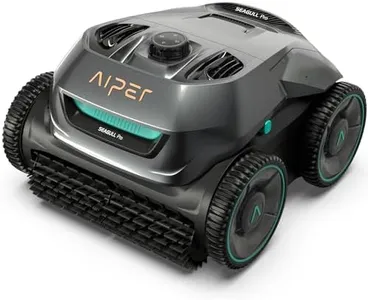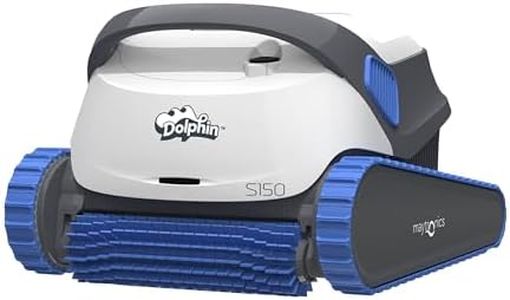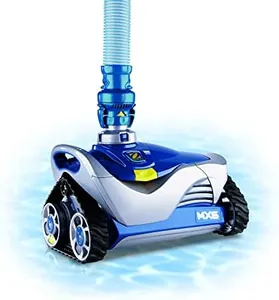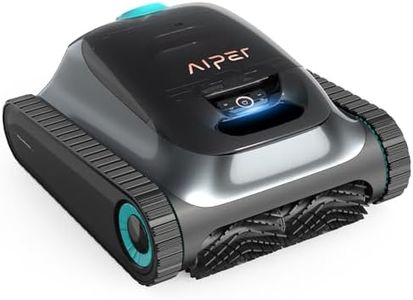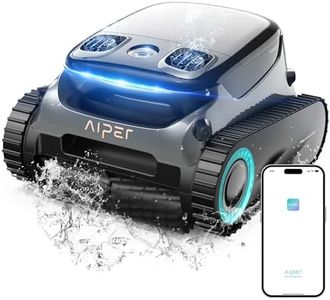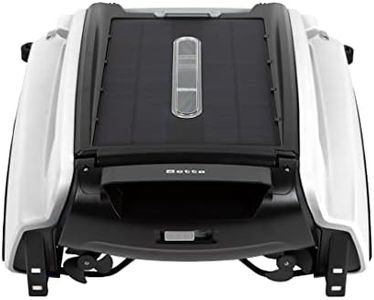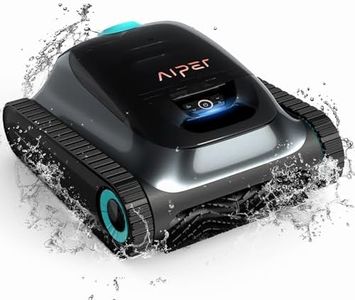We Use CookiesWe use cookies to enhance the security, performance,
functionality and for analytical and promotional activities. By continuing to browse this site you
are agreeing to our privacy policy
10 Best Pool Cleaner Robots
From leading brands and best sellers available on the web.Buying Guide for the Best Pool Cleaner Robots
Choosing a pool cleaner robot can make maintaining your pool vastly easier and save you lots of time. With so many types and features available, it’s important to consider your pool’s specific needs and your personal preferences. Think about the size and shape of your pool, the types of debris you typically deal with, and how hands-off you want the maintenance process to be. Knowing what’s available will help you identify the robot that best matches your lifestyle and pool requirements.Type (Suction, Pressure, Robotic)When looking at pool cleaner robots, you’ll come across suction-side, pressure-side, and fully robotic cleaners. Suction-side attach to your pool’s filtration system and are good for lighter, fine debris. Pressure-side use the water pressure from your pool pump to move around and often handle larger debris better. Robotic cleaners are stand-alone units that use their own motor and filters, and they tend to be the most convenient and powerful, handling a range of debris and requiring the least interaction. Picking the right type depends on how much cleaning power you need and how independent you want the system to be. For hands-off and comprehensive cleaning, robotic types are ideal, while suction or pressure-side units may suffice for less demanding needs.
Coverage and Cleaning CapabilitiesCoverage refers to what parts of your pool the robot can clean, such as the floor, walls, and waterline. Some pool robots only do the pool floor, while others can climb walls and even scrub the tile at the waterline. If your pool tends to collect debris not just on the surface but also on the sides, or if you want a thorough clean, look for robots with multi-surface capabilities. If you have a simple, above-ground pool or mostly debris on the bottom, a floor-only model may suffice.
Pool Size CompatibilityEvery robot is designed for a pool of a certain size or length. This matters because a robot made for small pools might not thoroughly clean a larger pool before running out of time or encountering problems. Manufacturers often provide a recommended maximum pool size, usually in feet or meters. Measure your pool and ensure the robot you pick is rated to cover your entire area. For larger pools, models with longer cables or wider cleaning paths are more efficient.
Filtration and Debris HandlingFiltration refers to how the robot handles the debris it collects. Some robots have fine filters for dust and algae, while others have larger baskets for leaves and twigs. Consider what kinds of debris are most common in your pool—if you have lots of trees nearby, a model with high debris capacity and accessible filter baskets can save you from frequent emptying. If small particles and sand are more of an issue, opt for one with ultra-fine filtration.
Cleaning Cycle TimeThis spec tells you how long it takes for the robot to clean your pool. Cycle times can range from around one hour up to several hours. Shorter cycles are good for quick, daily cleans, while longer cycles may be better for more thorough, occasional cleaning. Think about how often you want to run the robot and whether you want a quick tidy-up or a deep clean. If you use your pool frequently, faster cycles can be more convenient.
Ease of Use and MaintenanceEase of use includes how simple it is to set up, operate, clean, and maintain the robot. Features like plug-and-play operation, lightweight design, and easy-to-clean filters make a big difference in everyday use. Some robots even have app controls or scheduling options for extra convenience. If you prefer minimal effort, look for models with tool-free filter cleaning, intuitive controls, or remote operation options.
Mobility and Navigation SystemThe way a pool cleaner robot moves around your pool affects how well it reaches every spot. Some robots have random movement, while others use smart navigation systems to map out the pool for systematic cleaning. Advanced navigation ensures better coverage, avoids getting stuck, and finishes faster. If you have a pool with corners, irregular shapes, or obstacles, it’s worth looking for a robot with advanced navigation and obstacle avoidance features.
Cord Length and Power SupplyCord length determines how far the robot can travel from the power supply. If your pool is long or you have an awkward setup, make sure the cord is long enough to let the robot reach all areas. Some advanced robotic models are cordless and run on batteries for more flexibility. If you want fewer limitations and no hassle with cords, a cordless model may be worth considering, but remember to check battery runtime.
